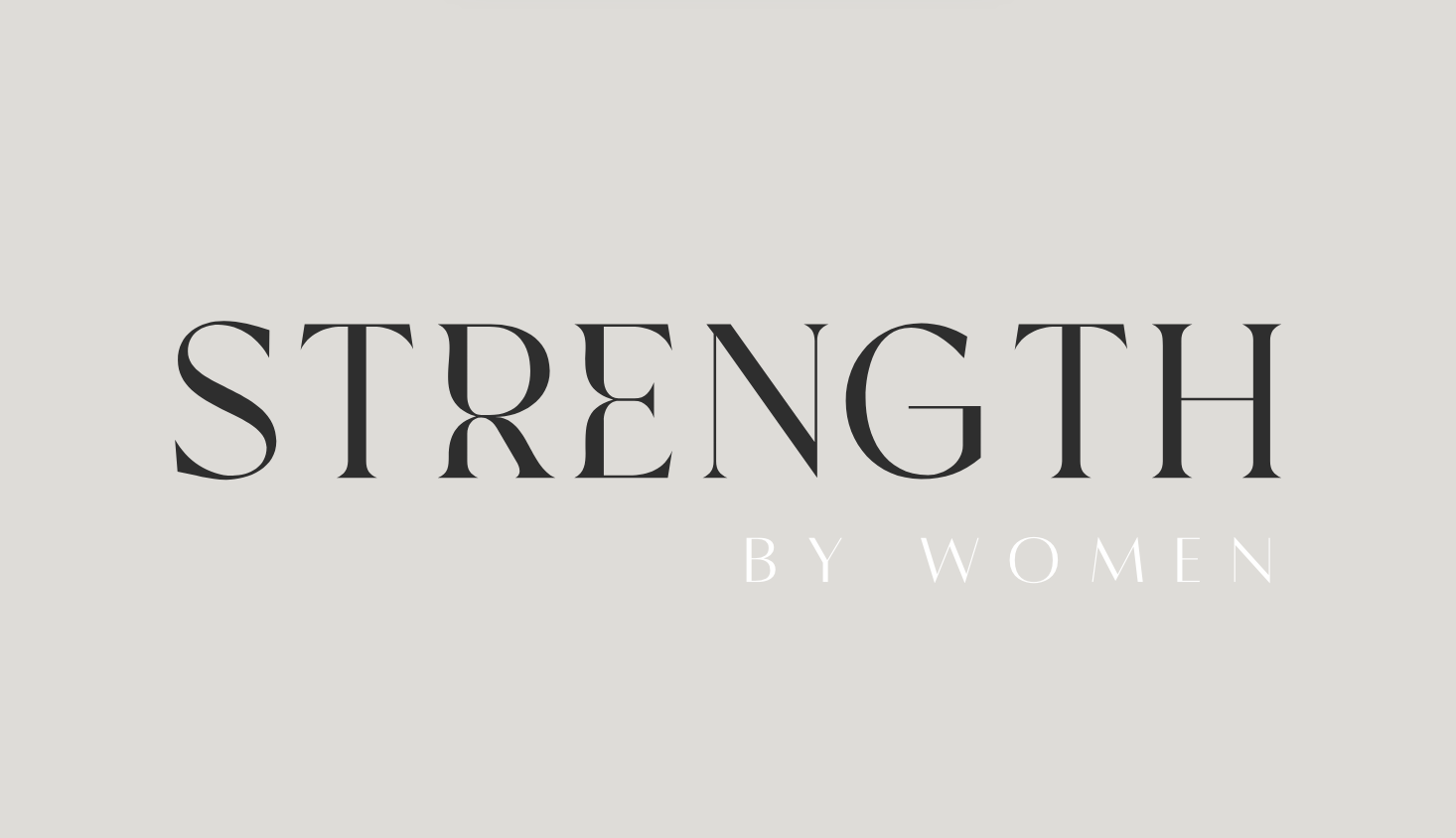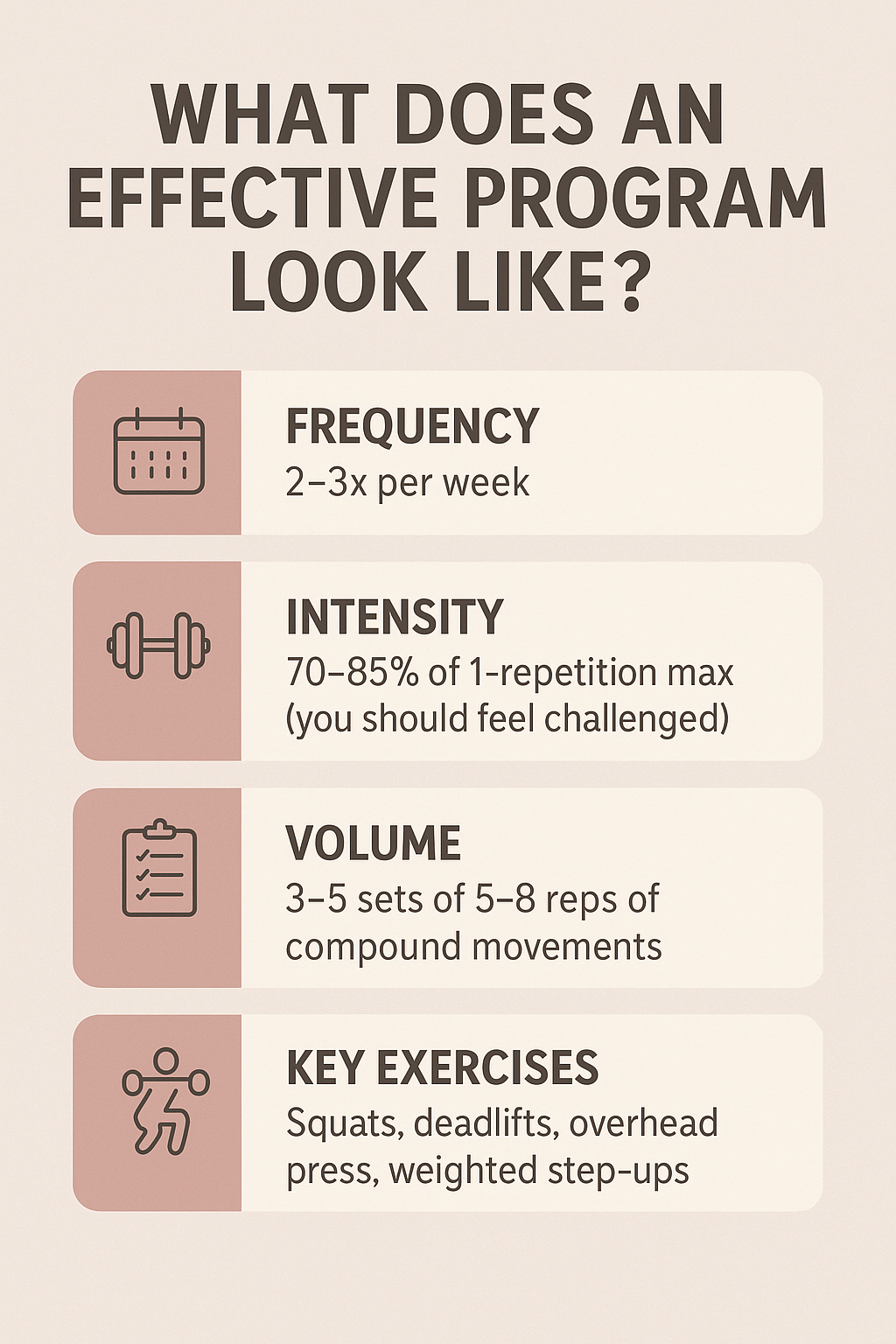Osteoporosis: How Strength Training Can Reverse Low Bone Mineral Density
For many women, the journey through midlife is a balancing act: careers evolve, families grow, and our bodies begin to change.
One of the most silent and significant change is a loss of bone mineral density (BMD).
If we take a look across the lifespan, for women, bone strength is at it’s peak around our mid-20s¹.
BMD declines slowly at a rate of about 0.3% per year before menopause, but this loss accelerates significantly to 1–1.6% per year during menopausal years²³⁴.
So, I am passionate about educating women- if we can start with more BMD earlier, that means there will be less to lose over time.
If we can exercise to preserve and grow BMD, that means we can mitigate fracture risk for years to come.
Let’s discuss how high-intensity resistance training is one of the most effective tools we have to rebuild our bones.
The Best Approach For Stronger Bones
Lift heavy weights
+
if safe and when ready,
include jumping & high impact exercises
There is a strong relationship between exercise intensity and bone building stimulation⁵.
We need enough mechanical strain and multidirectional load to stimulate bone-building cells.
This threshold often isn't met through light weights, walking, Pilates or yoga.
When it comes to directly improving bone strength, they simply don’t provide enough of a stimulus on their own⁷⁸.
But higher-intensity resistance training, particularly at loads of >80–85% and high impact training consistently shows greater gains in bone mineral density (BMD) in postmenopausal women with osteopenia and osteoporosis ²⁵⁹.
Let’s be clear: walking, Pilates and yoga are valuable as a supportive mode of exercise. But strength training needs to be the cornerstone.
Is Strength Training for Osteoporosis Safe?
Research consistently shows lifting weights is both safe and effective in improving strength and building muscle and bone for women who begin resistance training in their 50s, 60s or 70s⁹.
Although, if you’re just starting or returning to exercise after some time off, make sure to phase into it with the goal being to work towards those high intensities.
And if you’re wondering, it’s never too late to start.
Exercise Plan For Stronger Bones
Here’s what the research recommends for women in midlife:
Frequency: 2–3x per week
Intensity: >70–85% (you should feel challenged by the final reps)
Volume: 3–5 sets of 5–8 reps of compound movements
Key exercises: Squats, deadlifts, overhead press, weighted step-ups
If safe, incorporate: Impact training like jumps, stomps, or fast stair climbs
Become Stronger With Us
Being diagnosed with low bone mineral density can feel daunting but it’s empowering to know that your body can still respond and adapt at any age.
At our clinic, we support and guide women toward optimal exercise approaches to build strength, function and balance and maximise long-term bone health.
If you need help getting back into exercise or you’re starting strength training for the first time, we create a plan to progress you towards safely working at high intensities that will yield you results.
✨ Join Our Waiting List
We’re opening soon in Sydney’s North Shore and inviting women who are ready to invest in their long-term strength and wellbeing.
We look forward to meeting you!
References
Weaver, C. M., Gordon, C. M., Janz, K. F., Kalkwarf, H. J., Lappe, J. M., Lewis, R., O’Karma, M., Wallace, T. C., & Zemel, B. S. (2016). The National Osteoporosis Foundation’s position statement on peak bone mass development and lifestyle factors: A systematic review and implementation recommendations. Osteoporosis International, 27(4), 1281–1386.
Kitagawa, T., Hiraya, K., Denda, T., & Yamamoto, S. (2022). A comparison of different exercise intensities for improving bone mineral density in postmenopausal women with osteoporosis: A systematic review and meta-analysis. Bone Reports, 17, 101631.
Zhao, F., Su, W., Sun, Y., Wang, J., Lu, B., & Yun, H. (2025). Optimal resistance training parameters for improving bone mineral density in postmenopausal women: A systematic review and meta-analysis. Journal of Orthopaedic Surgery and Research, 20, 523.
Greendale, G. A., Barrett-Connor, E., & Edelstein, S. L. (1999). Bone mineral density in postmenopausal women: The Rancho Bernardo Study. American Journal of Epidemiology, 150(3), 199–203.
Kistler‑Fischbacher, M., Weeks, B. K., & Beck, B. R. (2021). The effect of exercise intensity on bone in postmenopausal women (Part 1): A systematic review. Bone, 143, 115696.
Zhao, R., Zhang, M., Zhang, Q., & Wu, Y. (2020). Effects of dynamic resistance training on bone mineral density in postmenopausal women: A systematic review and meta-analysis. Osteoporosis International, 31(8), 1427–1444.
Martyn-St James, M., & Carroll, S. (2008). Meta-analysis of walking for preservation of bone mineral density in postmenopausal women. Bone, 43(3), 521–531.
Pérez, M.A., et al. (2021). Effectiveness of Pilates and Yoga to improve bone density in adult women: A systematic review. PLOS ONE, 16(4), e0251391.
Watson, S. L., Weeks, B. K., Weis, L. J., Harding, A. T., Horan, S. A., & Beck, B. R. (2023). High‑intensity resistance and impact training improves bone mineral density and physical function in postmenopausal women with osteopenia and osteoporosis: The LIFTMOR randomized controlled trial. Osteoporosis International, 34(1), 123–136.
Daly, R. M., Dalla Via, J., Duckham, R. L., Fraser, S. F., & Helge, E. W. (2019). Exercise for the prevention of osteoporosis in postmenopausal women: An evidence-based guide to the optimal prescription. Brazilian Journal of Physical Therapy, 23(2), 170–180.


